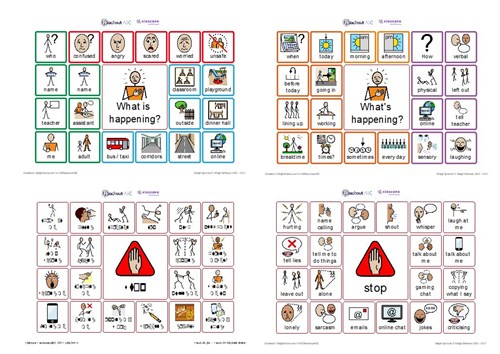First steps to supporting autistic children with bullying

I am Lynn McCann from the team of autism specialist teachers at Reachout ASC. We are working with Kidscape to adapt their anti-bullying support programmes and resources so that they are accessible for autistic children and their families, and support schools with an autism-inclusive response to bullying. Kidscape does an amazing job of supporting children who have been bullied, enabling their parents and families to communicate and work with schools to make the bullying stop. We love their approach of providing programmes of support to help children recover from bullying and give them tools to feel confident in bullying situations in the future.
In our work with autistic children, their parents, and their schools we have seen a lot of bullying situations. We see how often children are left to deal with the long-term effects. Many studies have discovered that autistic children are more likely to experience bullying, and according to surveys by the National Autistic Society and Ambitious about Autism, between 75-82% of autistic children have experienced bullying.
Being clear on what we mean by bullying
Kidscape defines bullying as “when one person or a group of people, deliberately hurt another person, more than once, and it’s hard for the person on the receiving end to defend themselves.” Although no definition will be perfect, having one gives us something definite to work from. For autistic children having a clear, defined parameter can help us work out what is happening in the situation they are telling us about.
Helping autistic children understand bullying
Some autistic children may label behaviour they don’t like or decisions that adults have made that negatively impacts them as bullying. When other children don't want to play what the autistic child wants, it can be interpreted by the child that the other children are bullying them. Children may vocalise the fact they don't want to play with somebody. For the autistic child, this can have the same emotional impact as being bullied. This shows us that we must take time to understand the context and invest time in working out what is happening. At the very least there is a need to get children together to understand how best to work through the issues that are happening and not dismiss them, whether they are bullying or not. On the other hand, the targeted name-calling, isolation, teasing, physical, online, and verbal bullying that some autistic children may experience, can be relentless and far too common in our experience. In some circumstances, this could even constitute a hate crime, and we are concerned that schools do not always take this aspect of bullying seriously. These incidents are often dismissed as the autistic child’s misunderstanding when it can be more socially aware children using this to manipulate the adults into dismissing it as ‘just banter’ or the autistic child’s imagination.
Why do so many autistic children experience bullying?
There are many reasons for this. In our experience, the number one reason is that autistic children can seem different to others. In society, differences are picked on, pointed out, ridiculed, and people who are different are left out and marginalised. Often bullying is ignored in the earliest stages because teachers dismiss the situation as being, ‘just children falling out’ or ‘differences of opinion’. The autistic children we know often find it difficult to communicate with adults. They struggle to give the full details, or too many details, or the expected sequence of events. They may not be able to identify the children bullying them. Adults can’t interpret the situation fully because they are not seeing it from the autistic child’s perspective. This is what Professor Damian Milton calls the Double Empathy Problem. If an autistic child doesn’t tell the story in a typical way, we could easily dismiss the account as unreliable.
In our experience, teachers who are tuned into autism and know their children well can pick up on bullying. They take the time to help the autistic child communicate in a safe and accessible way and then use restorative approaches to make positive changes.
What resources can help autistic children communicate their experiences?

We wanted to start at the beginning and have created a communication mat. We have partnered with www.widgitonline.com who have given us permission to use their visual symbols. Visual communication can provide significant support for autistic children to help with vocabulary and word memory.
We know that autistic young people can find it difficult to find the words to communicate about bullying to adults. Stress and fear can cause the inability to communicate verbally. Other autistic young people can find it difficult to sort out what are the bullying incidents from the general things that happen in a stressful school day. So, this first resource, the bullying communication mat, can help parents and teachers work through the facts and important details to present the information to the school and develop an action plan to make the bullying stop.
We have created it as a visual structure, to organise the conversation into smaller chunks with an action plan so that the child knows who is going to do what and when you will speak to them again. There can be so much anxiety about what might happen if they tell someone, that making the action plan clear to the child will go some way to reassure them.
The communication mat and two social stories which help autistic children understand and share experiences of bullying are available for download here.
By Lynn McCann, Autism Specialist Teacher, ReachoutASC.
A huge thank you to The Gemini Foundation for their kind support for this work.
If you share our vision for all children to grow up in supportive communities safe from bullying and harm, please donate today.


